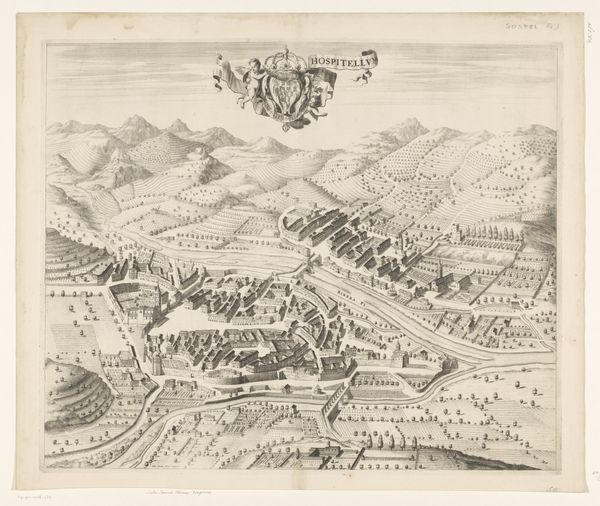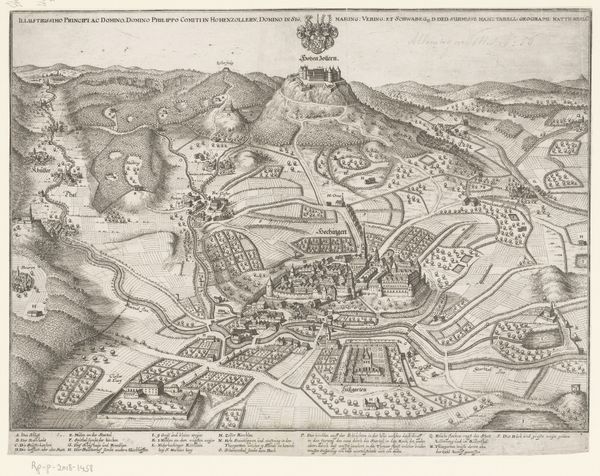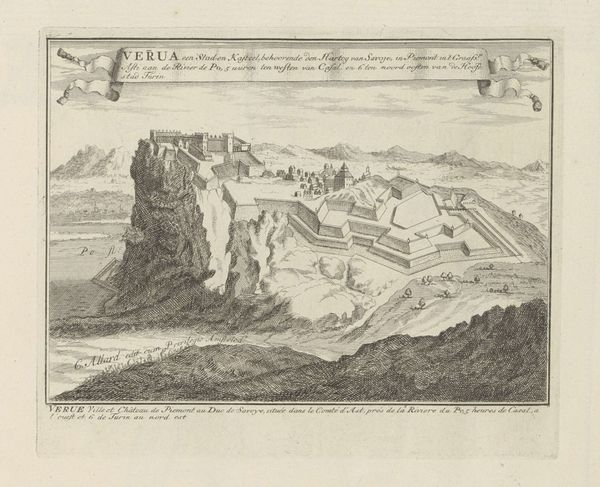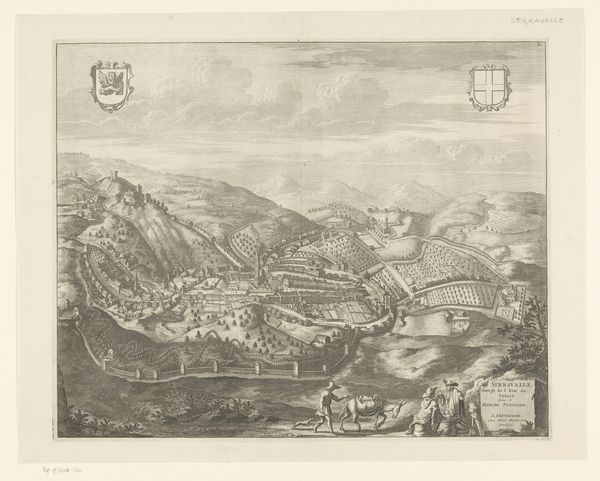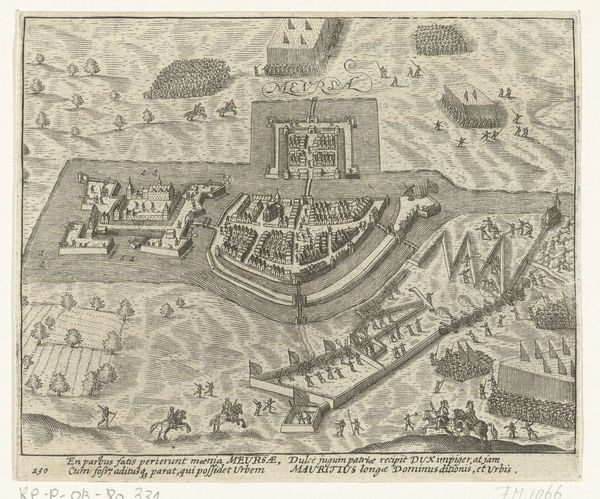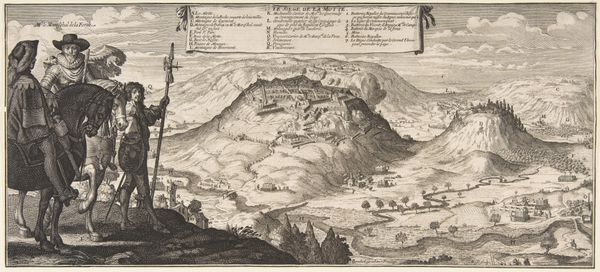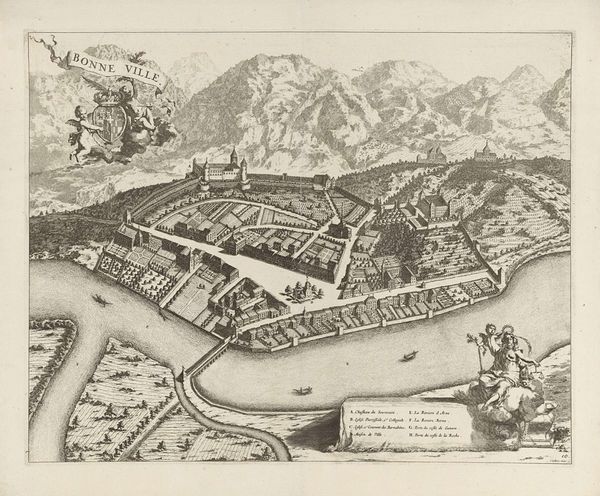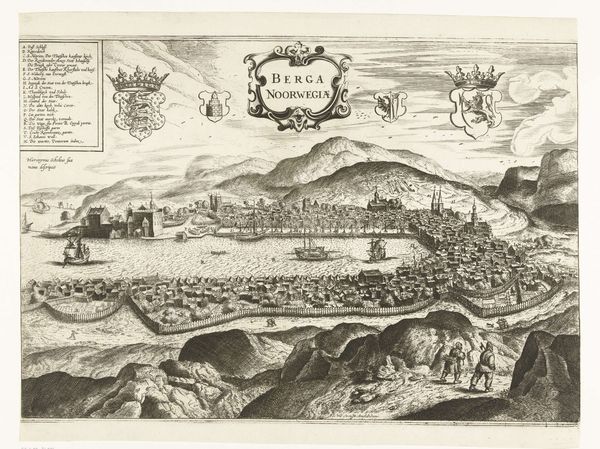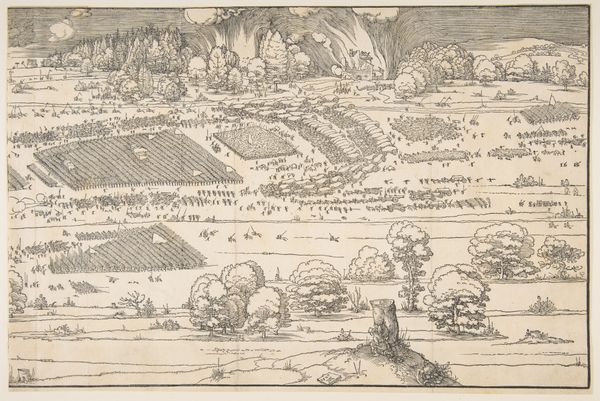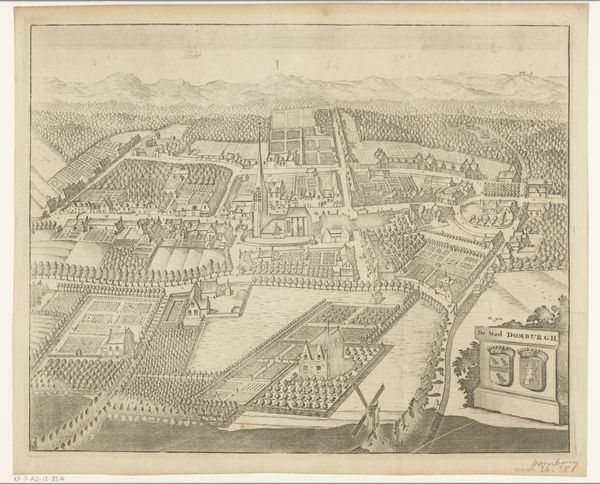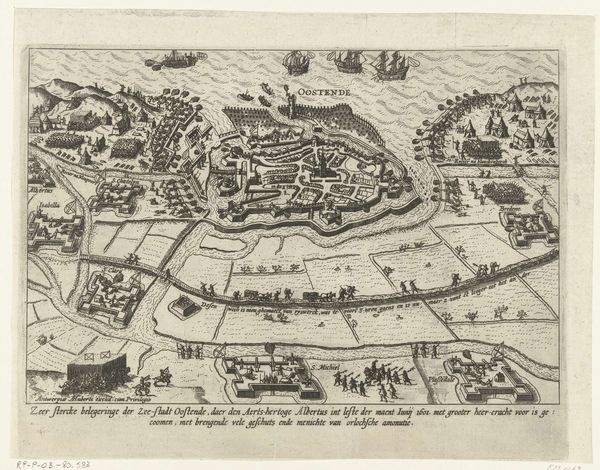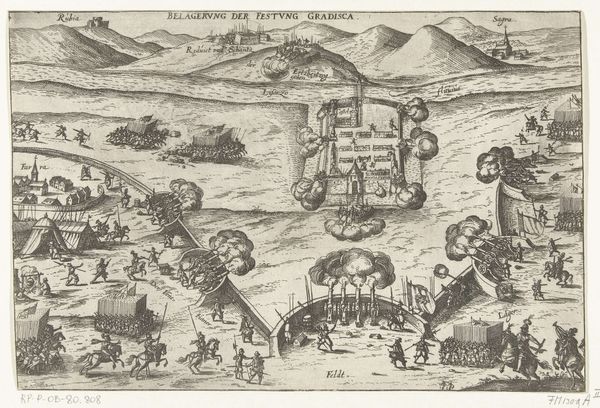
print, engraving, architecture
#
baroque
# print
#
old engraving style
#
landscape
#
engraving
#
architecture
Dimensions: height 515 mm, width 580 mm
Copyright: Rijks Museum: Open Domain
Curator: Editor, this is “Het fort van Santa Maria di Lucerna,” an engraving from 1663. What strikes you most about it? Editor: I am fascinated by its geometric composition, but also by the mountains dominating the background; how does the architecture dialogue with the landscape? Curator: An interesting observation. The fort, with its rational, star-shaped design, and the natural landscape behind: don't you think it's speaking about power structures imposing themselves on nature? Consider the period in which this was created. This engraving arrives at a time when Europe was consumed by a series of conflicts known as the Wars of Religion: this context invites us to consider questions about social control and geographic conquest, the use of power to occupy territories. How do you view that? Editor: Yes, I see what you mean, an expression of territorial power. So the visual contrast between the "artificial" geometrical shape and the natural landscape underlines those dynamics? Curator: Exactly. And consider the vantage point: we are placed above, seemingly neutral. Yet, the position itself implies authority, a claiming of visual dominance over the space depicted. This perspective, which emphasizes the artificiality of the fort, also speaks to the relationship between those who commissioned these kinds of prints and the projection of their dominion. Editor: It feels as though this neutral perspective can reveal a lot more about the people commissioning the artwork, compared to more glorifying paintings. Curator: Precisely. Furthermore, note the human figures populating the scene. They seem almost ornamental within this meticulously rendered fortress. Consider Michel Foucault's theories about visibility and power: the design ensures constant surveillance. Do these kinds of layouts allow free circulation for people? Or are these expressions of subjugation in response to political, social and religious upheaval of the time? Editor: This piece really opens a window into a complicated, troubled era, now that you've illuminated these dynamics of power and control within the artwork. Curator: Indeed, by reading it through these critical lenses, we see more than just architecture, right?
Comments
No comments
Be the first to comment and join the conversation on the ultimate creative platform.
